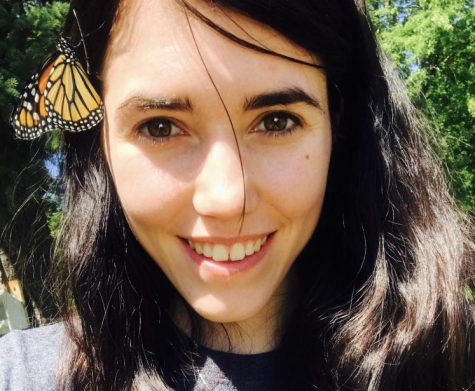Forensics aids in NPR skeleton search
April 10, 2018
On March 20, Skunk Bear, a science show hosted by National Public Radio, posted an episode of the show titled “Classroom Skeleton: Whose Bones Are These?”
The episode was about a real human skeleton that was found at a local high school, Northwest Pennsylvania Collegiate Academy.
Kim Leasure, an art teacher at the school, has housed the skeleton in her room for years.
“I also have a human skull in my room as well. They are used to draw, paint and form from, rendering the human form,” Leasure said.
Adam Cole, Skunk Bear host, and Elissa Nadworny, fellow NPR employee and Collegiate Academy grad, took the bones to the Smithsonian Institution National Museum of Natural History, where they found out that the costs associated with getting a DNA sample taken from bones are about $5,000.
Thus, they took the bones to Mercyhurst University to be analyzed by the Applied Forensic Sciences department.
“We’d heard about the forensic anthropology program and saw Dennis Dirkmaat in a few skeleton videos on YouTube,” said Nadworny. “It’s also right down the street from Collegiate — so it was pretty convenient.”
They asked Dirkmaat, Ph.D., chair of the Applied Forensic Sciences department, to analyze the bones to help determine the skeleton’s sex, age, height and ancestry.
“There’s a lot of information that can be told from the skeleton,” Dirkmaat said in the NPR video.
Dirkmaat, with the help of graduate students, took measurements of the various bones of the skeleton in order to make predictions about the person the skeleton belonged to.
First, the sex of the skeleton was determined by looking at the pelvis of the skeleton. This is a good place to start in forensic anthropology in sex identification because females have a broader pelvis opening, which allows for childbirth.
The pelvis was inconclusive so they looked at other features of the skeleton, mostly on the skull. For example, the mastoid process was analyzed to better confirm the sex of the skeleton.
Unlike what the staff at Collegiate Academy thought, Dirkmaat and this team of investigators determined that the sex of the skeleton was female.
To determine age, they looked at fused bones.
“We’re born with about 300 separate bones,” said Cole in the video. “By around the time we hit 40, we only have 206.”
There was a line in the end of clavicle, the collar bone, that told Dirkmaat and his team that the bone was in the process of fusing at the time of the woman’s death. Dirkmaat determined that her age was somewhere between 20 and 30.
The researchers determined from the long bones of the skeleton that the woman was about 5 feet 2 inches tall at the time that she died.
Using a database that compares the structure of the skull to other skulls from particular regions, the research team determined that the skeleton was probably Asian in ancestry.
Nadworny was grateful for the assistance that the Mercyhurst Forensic Anthropology program was able to provide.
“They provided key details to us about our skeleton. They also kick-started our discovery process, helping us figure out what questions to ask and where to go next,” Nadworny said.
She was also excited to show off her hometown to not only her co-workers but to all of NPR’s viewers. Nadworny spent a lot of time at Mercyhurst as a girl.
“I grew up just down the road from the college. I’ve skated at the Ice Center, used the indoor rowing tanks, spent summers riding my bike through campus, took piano lessons after school and hit up the Wednesday night films in Mary D’Angelo with my high school friends,” Nadworny said.
Andrea Ost, a second-year Forensic Anthropology graduate student, appreciates the experience that NPR brought to Mercyhurst.
“While studies of this kind can give forensic anthropologists information that can help us improve our methodologies, it also ultimately helps to tell the stories of unidentified individuals,” said Ost. “Having the chance to work on this case for NPR has been a valuable experience and wouldn’t have been possible without the program at Mercyhurst.”

